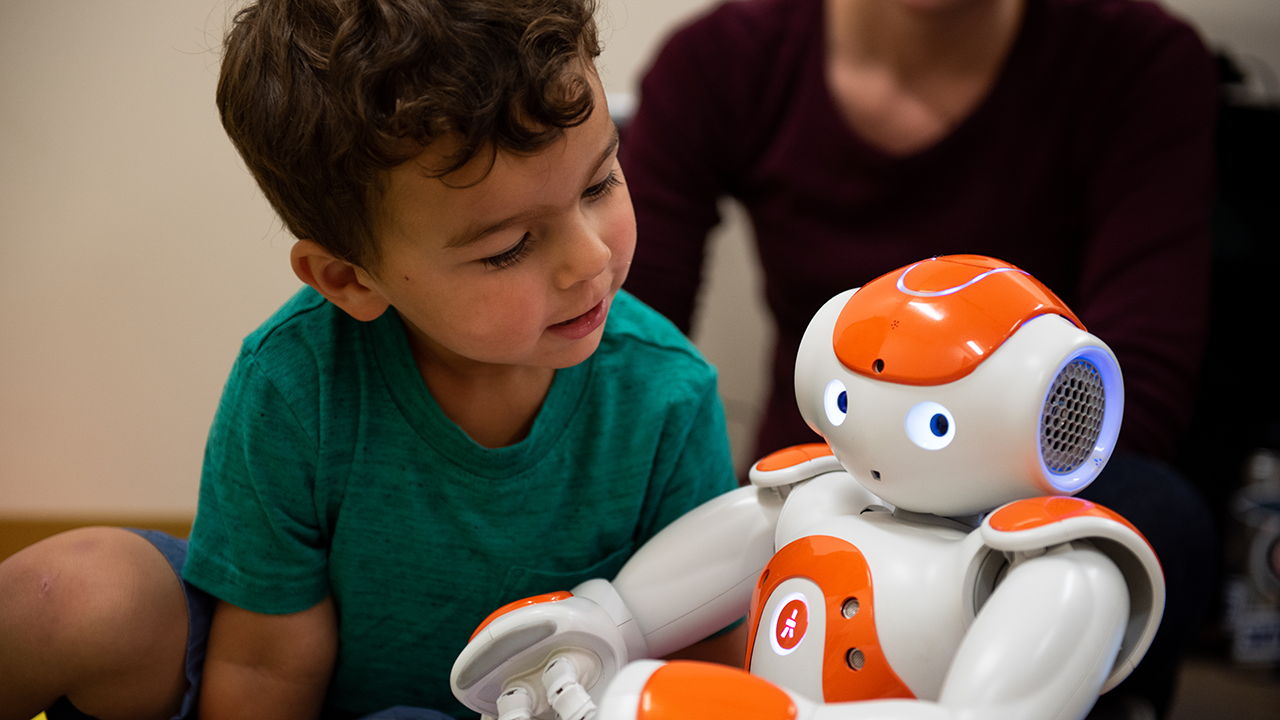
A team of University of Minnesota researchers have set out to help children with autism spectrum disorder benefit from early interventions—and to do it, they’re enlisting the help of a few mechanical assistants.
The researchers, from the U’s College of Science and Engineering and Medical School, are using moving, talking robots that can interact with children ages 2 to 4 years old and gather data that helps to reveal early signs of autism. One in 59 US children are on the autism spectrum, which can change the way they interact and communicate with others, but most aren’t diagnosed until age 4 or 5. Earlier detection increases the opportunities health professionals have to step in and begin behavioral treatment when children’s brains still have a lot of plasticity, making it easier to change the course of development.
The team includes Maria Gini, Ph.D., professor of computer science and engineering; Marie Manner, Ph.D. student in computer science; Amy Esler, Ph.D., assistant professor of pediatrics; and Suma Jacob, Ph.D., associate professor of psychiatry and pediatrics.
The robot is a tool for seeing how children interact with their surroundings and collecting large amounts of data that can help experts make more accurate decisions about the presence of autism-like symptoms. And because the robots behave in a standardized way, Gini said, they avoid any bias that a human might bring into the assessment.
“Autistic children like to interact with technology more than with people,” she said. “The objective of the project is to diagnose autism when the kids are very, very young, because the intervention can be done earlier, and it’s much more effective.”